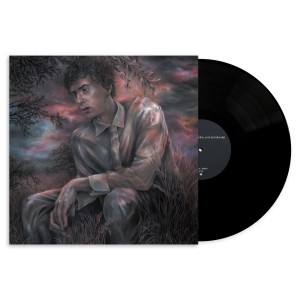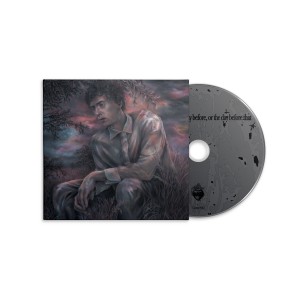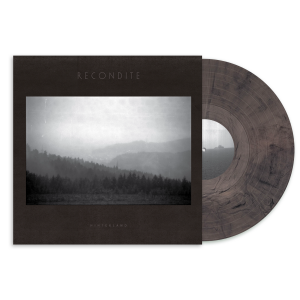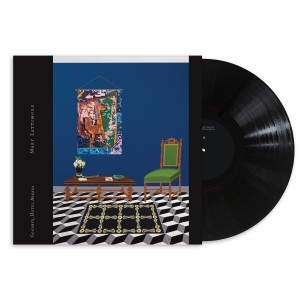
TRACK LISTING
01. What’s This About (La La La La)
02. To Your Own Devices
03. Any Day Now
04. God Interlude
05. Lonely
06. Running
07. In A Smile
08. Postcard From A Cloud
09. I See It Now
10. Sweet Devil
11. All This Time

01. What’s This About (La La La La)
02. To Your Own Devices
03. Any Day Now
04. God Interlude
05. Lonely
06. Running
07. In A Smile
08. Postcard From A Cloud
09. I See It Now
10. Sweet Devil
11. All This Time




01. Grey Gardens
02. Asleep At The Wheel
03. Me, I Think I Found It
04. Dying 'Til I'm Born
05. Is This Only Water
06. See You Later
07. Baby Voice
08. Words For Love
09 Tennisman9
10. The Make Believe (feat. Oklou)


1. Look Alive
2. Hammer
3. Alone
4. 22
5. Care
6. How It Goes
7. Dreams
8. Find Me Under Wilted Trees
9. Airplane
10. Play
11. I Draw A Heart
12. Love


01. Rise
02. Leafs
03. Still
04. Riant
05. Stems
06. Floe
07. Abscondence
08. Clouded
09. Fey
10. The Fade


1. Awake
2. Montana
3. L
4. Dye
5. See
6. Apogee
7. Spectre
8. Plains





01. And Then He Wrapped His Wings Around Me (Feat. Meg Baird And Walt Mcclements)
02. Arrivederci (Feat. Lol Tolhurst)
03. Blender In A Blender (Feat. Roy Montgomery)
04. Music For Applying Shimmering Eye Shadow
05. Horses, Glossy On The Hill
06. Yesterday’s Parties (Feat. Rachel Goswell And Samara Lubelski)

01. Come And Go (feat. Vilja Larjosto)
02. Zero To Sixty (feat. Sarah Jaffe)
03. Faceless
04. Dreaming (feat. Asy Saavedra)
05. Transonic
06. Plateau
07. Long Light (feat. Benoît Pioulard)
08. Cut And Cover
09. Home
10. Rafters
11. Double Take

1. Awake
2. Montana
3. L
4. Dye
5. See
6. Apogee
7. Spectre
8. Plains


1. Fainted Fog
2. Intertwine
3. All The While
4. Every Time
5. Impossible Valleys (CD/Digital Only)
6. Lineoa
7. A Familiar Place
8. Lowland
9. Well Within
10. Emeralds (ft. Hollie Kenniff)
11. Rounds

A1. Magic
B1. The Quaking Mess

1. Have You Felt Lately?
2. Locate
3. Let It Fall
4. Is It Me Or Is It You?
5. Check Your Translation
6. Pivot Signal
7. Unbraid: The Merge
8. Then The Wind Came
9. There Is Something
10. Give To The Water

01. Log In Your Fire
02. Moon In Your Eye
03. Brush
04. I Could Be Your Dog
05. Glendora
06. Blink Twice
07. Moonweed
08. Green To You
09. Amber
10. Standing In Your Light
11. Shim Sham
12. Golden Cow
13. Radio Replacement

A1. Untitled IV
A2. The Truth
A3. Power Of Grace
A4. (In The) Rain
B1. Spotlights
B2. Ramona
B3. Porta Coeli
B4. Beings Of Light

A1. Wawa By The Ocean
A2. We Wave From Our Boats
A3. For Scott Kelly, Returned To Earth
B1. Your Glossy Camry
B2. Be My Four Eyes
C1. Pine Trees (Home Recording)
C2. We Just Found Out She Died
C3. What The Living Do
D1. Polly Of The Circus
D2. The Warm Shoulder
D3. Mary You Were Wrong

01. Muscle Beach
02. Sow Down
03. Hikers Y
04. Never Divide
05. All Her Fits
06. Supper Times
07. Crash And Burn
08. Heart To Sing
09. Eye
10. Head
11. Gutters And Beyond

1. Olimpiyskiy
2. Serious Lover
3. Vaserne
4. Face Melting
5. Græske
6. Jeg Ser Dig
7. Cloud Nine
8. The Whirlpool Enigma
9. Perfect Estocada
10. Salvatore
11. Gamma Moth
12. Does It Look As If I Care

1. Streaker (ft. Notrabel),
2. Good Complexion,
3. Video Warning Attempts,
4. Eruption,
5. Lipstick Destroyer,
6. Self Tanner,
7. Face Breakout,
8. Blow Your Heart,
9. Beast Sting,
10. Dipsmack,
11. Creaming For Beginners,
12. Omen Classic,
13. Pool City, McKnight Road,
14. Spitlord,
15. Father Sister Berzerker,
16. The Touch From Within,
17. Bronze Hogan.
